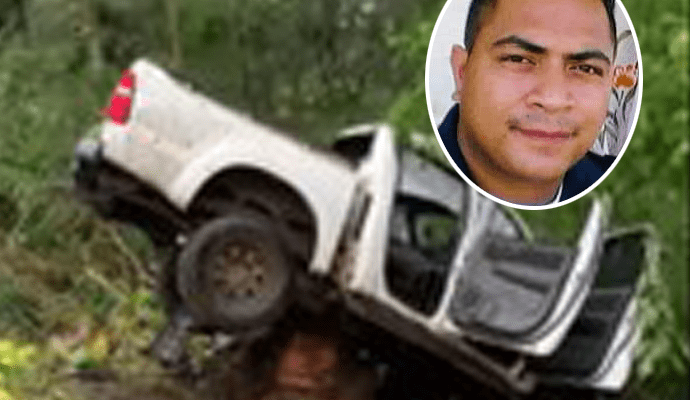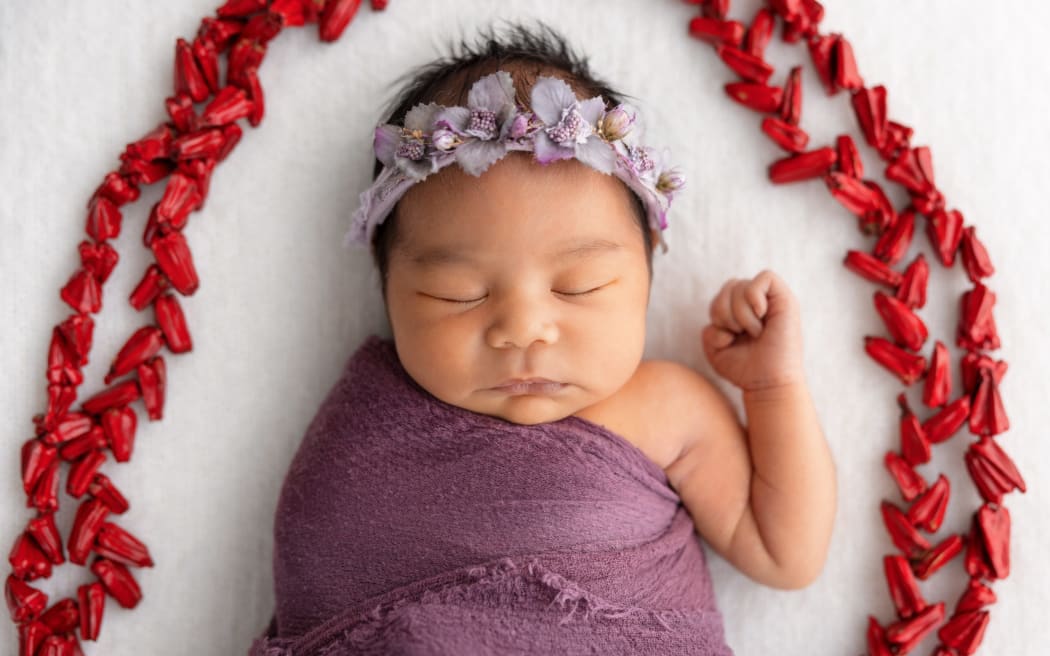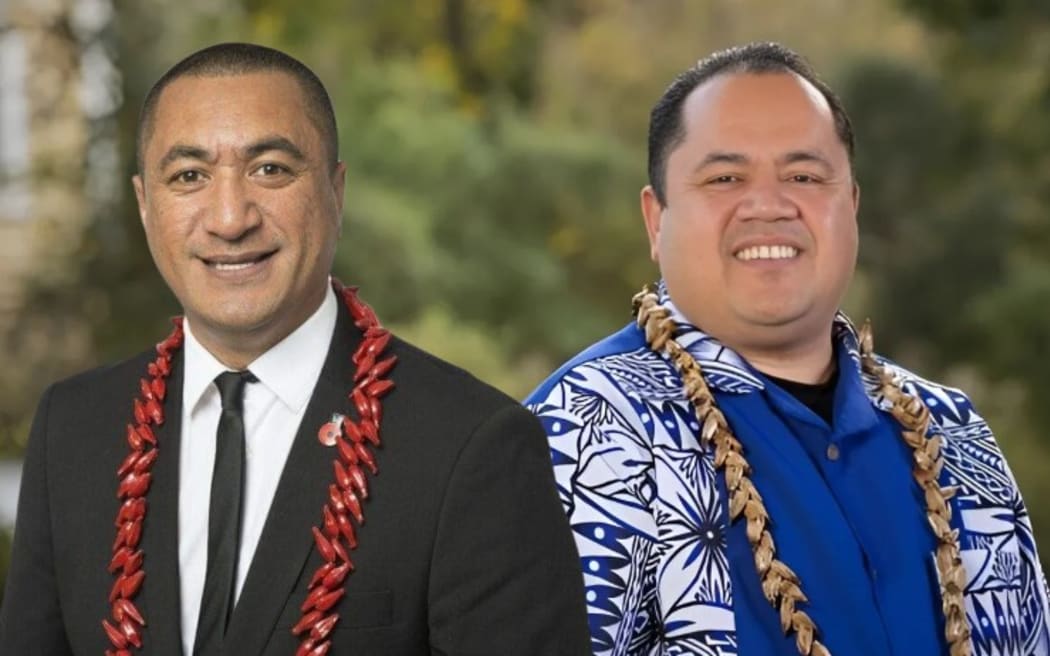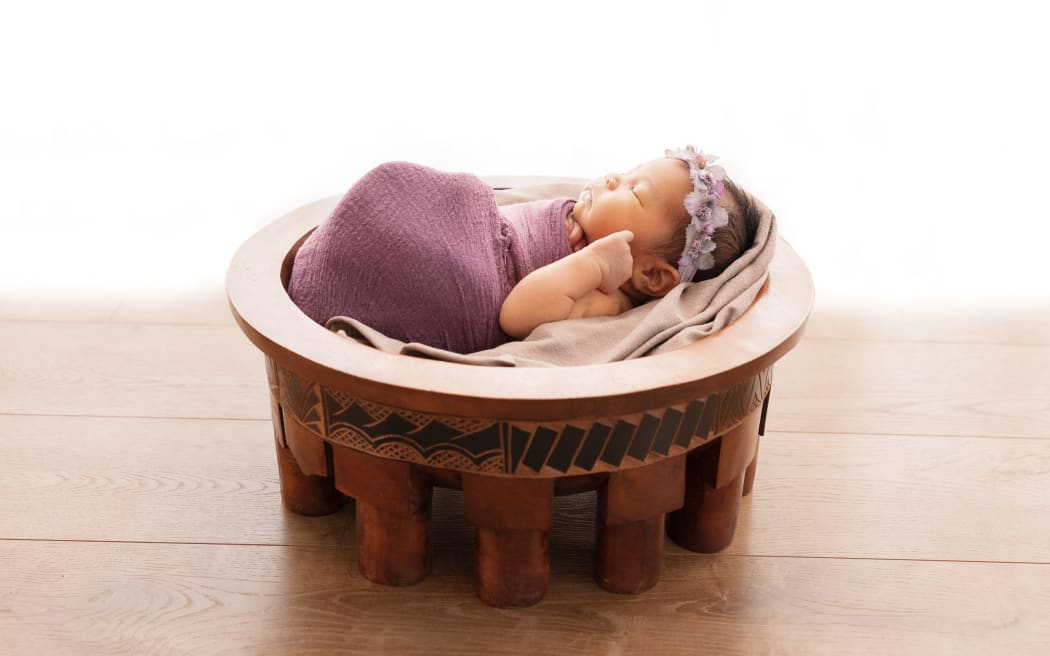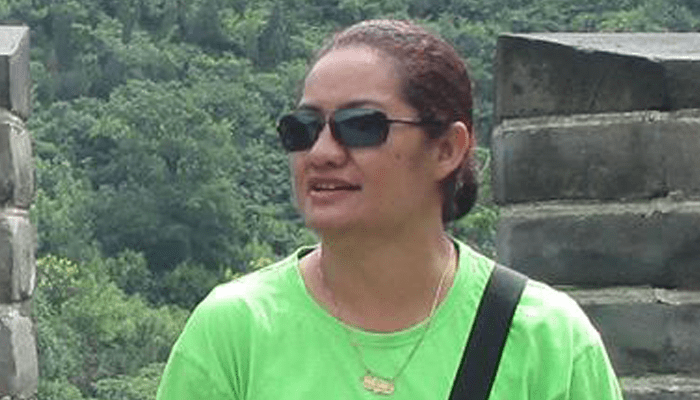By Iliesa Tora of rnz.co.nz and is republished with permission
First person – On 15 January 2022, the Hunga Tonga-Hunga Ha’apai undersea volcano erupted. It was the most powerful volcanic eruption since Krakatoa in 1883, and triggered a devastating tsunami which killed three people.
The tsunami waves devastated the small islands of ‘Atata and Mango, forcing the communities on both islands to relocate to the main island, Tongatapu, and the third largest island, ‘Eua.
RNZ Pacific journalist, Iliesa Tora, was in Nuku’alofa on the day of the eruption. This is his story.
This is our story – the days before
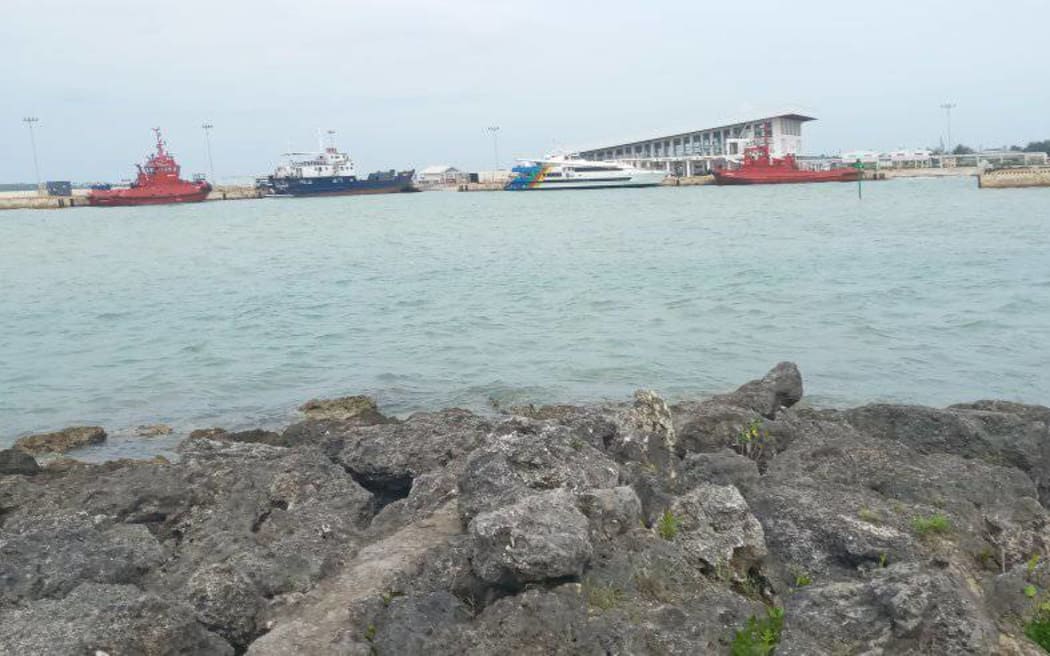
Sea currents beginning to build around the open sea swimming pool area at the Fasi Ma’ufanga waterfront on 14 January 2022. Photo: Iliesa Tora
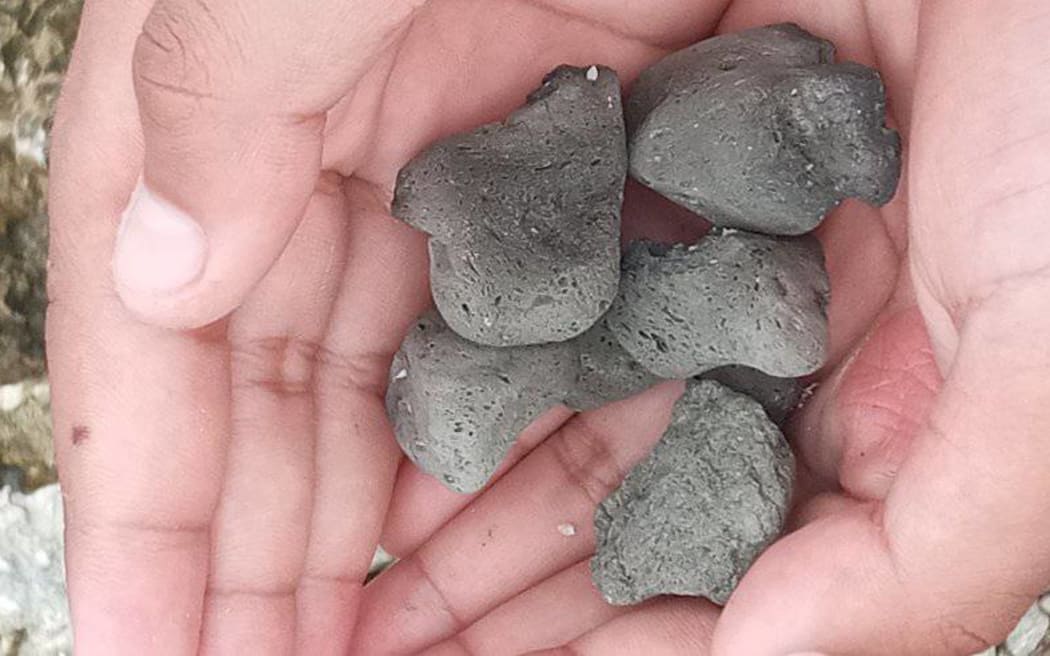
Some pieces of volcanic stones or ‘soata’ washed up on the Nuku’alofa waterfront on 14 January 2022. Photo: Iliesa Tora
Our family, and the rest of Tongatapu, Ha’api and ‘Eua, had observed volcanic eruptions from Hunga Tonga – Hunga Ha’apai site since early December 2021. They were similar to the submarine eruptions we experienced between 19 December 2014 and 28 January 2015. Reports from the Tonga Geological Services stated that the eruptions had added a circular area of land, over 100 metres in elevation, at a spot south of and about midway along Hunga Ha’apai island’s length.
This new island initially grew as an isolated third island, before eventually it joined and became part of Hunga Ha’apai. The new land had a surface about 1.5 to 2km in diameter. The new island grew until it was only a few hundred meters from Hunga Tonga island. But those eruptions were much smaller than the ones we witnessed in December 2021.
In the early days of January 2022, my wife Asinate and our son Samuela noticed changes occurring in Ha’amoko, where we lived. This was about a 10-minute drive from central Nuku’alofa and four minutes to the beachfront.
We noticed strange smells, similar to mangrove swamps with stagnant water.
During the week of 9 to 14 January we were advised, via radio, that acid rain had been observed on some of the smaller islands in the Ha’apai Group, near the volcano. The acidic rain had damaged plants and burned water tanks and pipes.
On the morning of 14 January, our family were woken by a strong sulphurous smell that enveloped our house. My wife and I thought it was from the drainage system that we had created to take used water from the kitchen sink to our small taro plantation. However, Samuela noticed the same sulphurous smell on the road, when he walked to the shop.
A radio announcement from the Tonga Meteorological Services around midday stated there was a tsunami marine warning for coastal areas of the Tonga islands.
The statement said: “Volcanic Cloud Imagery at 9am local time had indicated the current volcanic eruption activity that has been erupting in the Hunga-Tonga & Hunga Ha’apai Areas.”
“One of the signs of a volcanic eruption is the smell of sulfur in the air. It has been noted this morning (around 7am to 8am) that a strange sulfurous odor can be smelt in the air. This sulfurous smell is like the smell of silt clay (kele) from mangrove sites and fanga’uta lagoon areas.
“Acid rain is also a possible result from this eruption and sulfurous smell. So, it is advised that the people should be careful in collecting rainwater during rainy periods today as it may affect our health and environment.”
We were curious to find out and see for ourselves what was happening, and drove towards the Nuku’alofa waterfront. As we drove alongside a popular swimming spot along the Fasi Ma’ufanga area we noticed something happening within the open sea swimming pool area. When waters flushed into the area the levels went high, but when the waters receded the whole pool area dried up.
Further towards the Taufa’ahau Wharf a strong water current was building, with circular movements we could clearly see. We also noticed there were volcanic stones or ‘soata’ in Fijian washed up around the swimming pool area.
I livestreamed the event on my Facebook page, as an awareness piece and warned of the incident unfolding before our eyes.
That evening our Fijian Methodist Church group in Nuku’alofa were scheduled to visit a female member who was partially paralysed. She lived with a Fijian family along the Sopu coastline, looking out to ‘Atata Island. During the visit we sat half-scared, half-curious as we watched what the happening out at sea that night.

The red skies seen from the Nuku’alofa waterfront on 14 January 2022. Photo: Iliesa Tora
As the sun slowly dropped over the horizon, a shade of red stretched from the sky to the ocean. Lightning flashed across the sky, starting about 4pm and continuing into the night.
Tongan police officers were going around the coastline and sending people home.
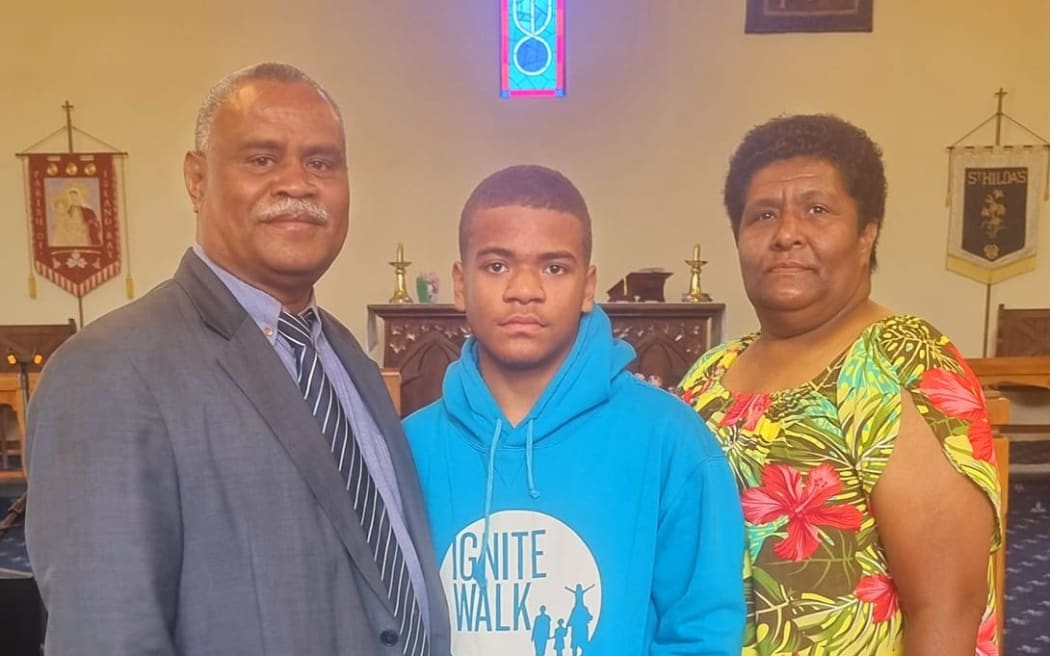
Three years later, we remember the events of 15 January 2022, even though we have moved across the seas to Wellington. Photo: Iliesa Tora
15 January, 2022
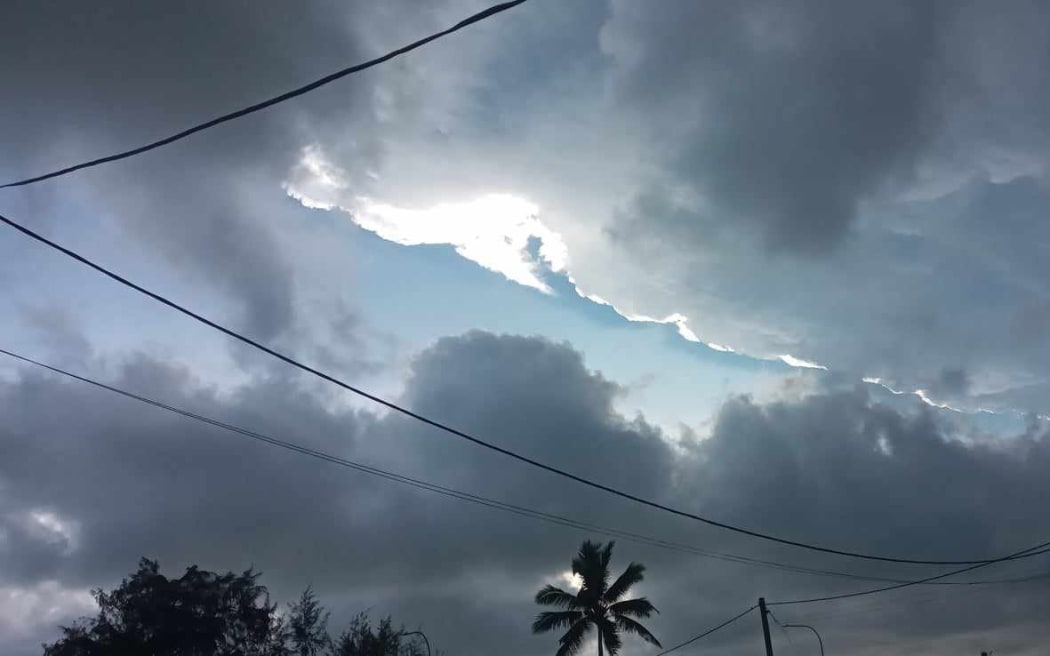
Volcanic clouds cover the skies over Tongatapu at around 5pm on 15 January 2022, as the Hunga Tonga – Hunga Ha’apai volcano started erupting. Photo: Iliesa Tora
The next morning it appeared as though the eruptions had died out. So, we decided to do some work outside the house and began mowing our lawn. Reassuringly, Tonga Met had cancelled the tsunami marine warning for some parts of Tonga.
We took a break at lunch until about 4.15pm. We went back to cleaning our compound when suddenly a deafening blast shook the ground and everything around us. We were still reeling and confused when a second explosion sounded. We looked up to the heavens; we saw black clouds had almost covered the whole of Tonga.
My journalist instincts awakened and I grabbed my camera and jumped into the car. With Asinate and Samuela joining me, we headed for the waterfront to take photos and video of what was happening. As we were driving we heard a third and fourth eruption.
At the Tuimatamoana market the Saturday vendors were running to and fro. People were shocked, unable to believe what was happening. I stopped the car next to the fish market and as I held up my camera towards the Fafa Island Resort, I noticed the waves rising almost to the same level as coconut trees on the island.
I knew this was going to be bad so I jumped back into the car, turned the ignition on, rammed the accelerator and dashed off towards home. We were about 1,000 metres away when the first tsunami waves hit the wharf, as we heard shouts from where the waterfront was, with vendors running away to safety.
We made it to the house and only stopped to throw some clothes into two bags. We grabbed our nephew, who was at home, jumped back into the car and headed towards a tsunami evacuation spot around the Pili area. Along the way pieces of volcanic stones came falling down, hitting the car roof followed by acid rain.
The roads were jam-packed as people tried to get to safety.
I livestreamed the event as we drove towards Pili, letting family members, friends and viewers know that we in Tonga were being hit by a tsunami and volcano eruptions.
Internet connections died about 30 minutes later and as the night arrived and darkness enveloped Tongatapu, we were all praying. Along with five other families, including six young children, we took shelter at a Fijian family’s house in the Pili area. It was not until Sunday morning, 16 January 16, when we finally saw the awful damage that the eruptions and tsunami had done.
The day after
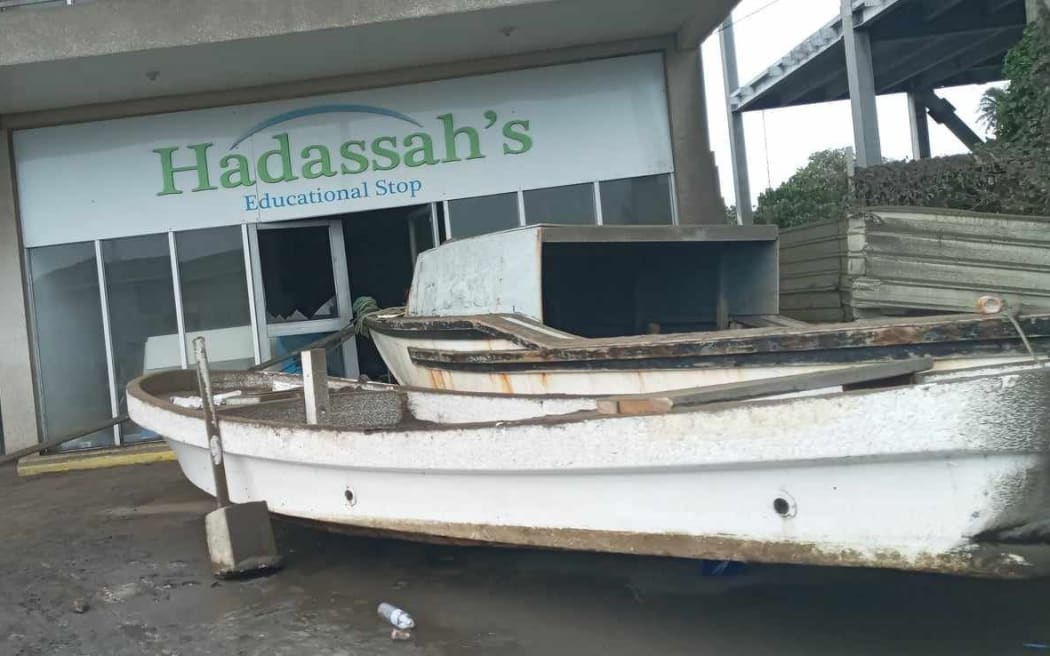
A fishing boat ends up on the road in front of this bookshop in Ma’ufanga, Tongatapu on 16 January 2022. Photo: Iliesa Tora

Volcanic ashes cover this car in Pili, Tongatapu on 16 January 2022. Photo: Iliesa Tora
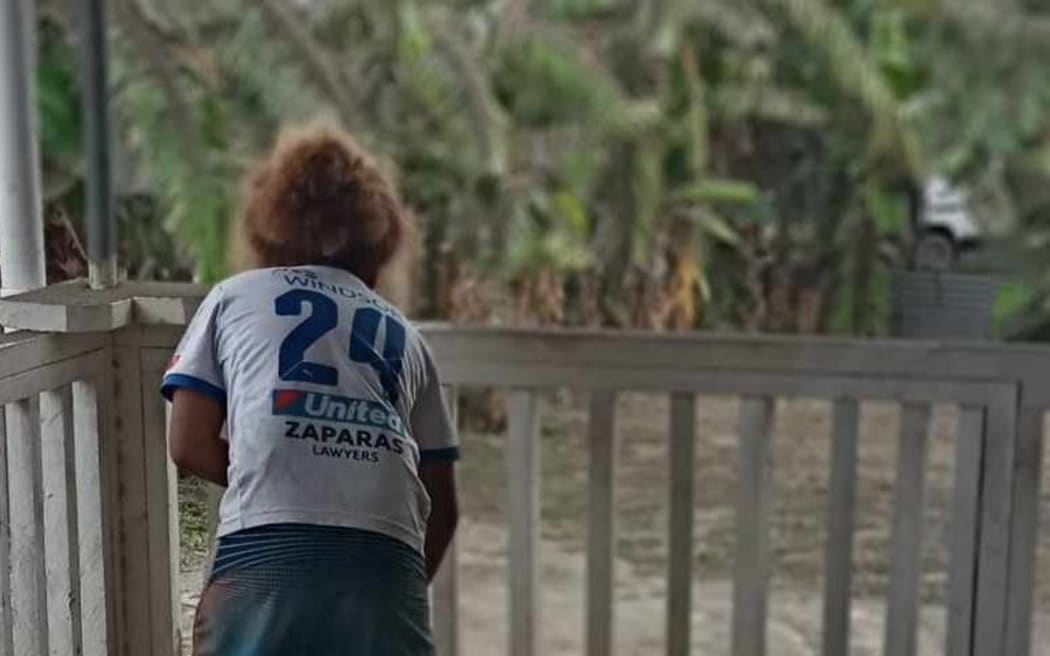
Young Samuela Tora cleans up the verandah at home on 16 January 2022. Photo: Iliesa Tora
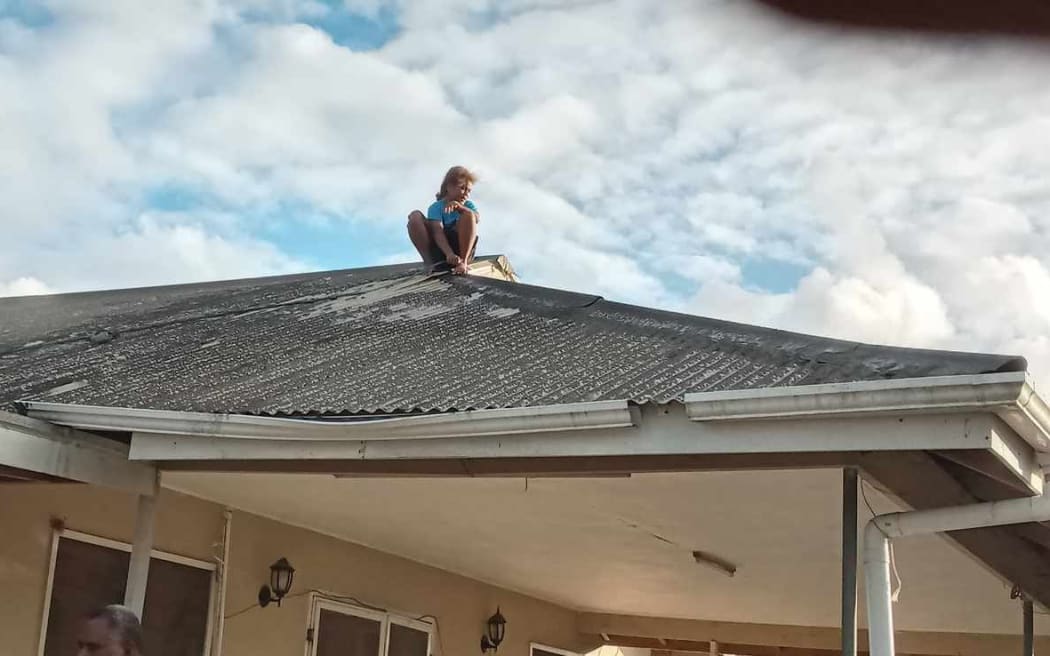
Volcanic ashes cover our rooftop in this 19 January, 2022 photo, following the eruptions on 15 January. Photo: Iliesa Tora
As daylight came, we decided to go and see what had happened in the aftermath of the eruptions and tsunami.
Grey was the colour of the day, as volcanic ash and sand covered everything including rooftops, roads, trees and cars. A drive through the villages towards the sea revealed more of the same. When we reached the main waterfront area, we saw damaged houses and fishing boats, which had been washed up on the roads.
Prime Minister Hu’akavameiliku Sioasi Sovaleni had sought approval for shops to open that Sunday morning, and declared a state of emergency. Everyone had to buy bottled water because their drinking water tanks were contaminated by the acid rain and volcanic ash.
Later, we gathered with the other Fijian families, at the Pili house where we had taken refuge, to offer prayers of thanks for our survival. We knew our families on the mainland would be worried about us, as all communications had been cut by the eruptions.
We have since moved to Wellington, New Zealand, and both my wife and son are still nervous when they feel the earth tremors or earthquakes here.
Although we would never want to experience an eruption like that again, there were lessons to be learned from it. The biggest lesson was that we need to be prepared and take tsunami warnings seriously. Many Pacific Islanders have a tendency to take such warnings for granted, but for anyone who experienced the 15 January eruption, that has probably changed.
The stories of both loss and survival from that day will hopefully be retold for generations to come, so we will always be ready for the next natural disaster.












